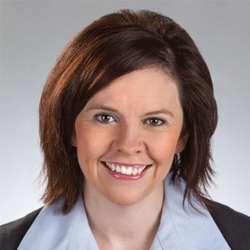The term “fearless leader” just might be going the way of other increasingly retro monikers like “rotary phone,” “cassette tapes,” and “print newspapers.” More and more, the most effective leaders of today are often at their best when they are able to express and help others channel their own vulnerability, say adherents to a new wave of leadership and executive thinking.
At the forefront of this new leadership movement is Brene Brown, a research professor at the University of Houston, where she holds the Huffington Foundation – Brené Brown Endowed Chair. She’s the author of five #1 New York Times bestsellers: The Gifts of Imperfection, Daring Greatly, Rising Strong, Braving the Wilderness, and Dare to Lead. Her TED Talk, “The Power of Vulnerability,” is one of the most watched of all time for the popular TED Conference series.
“I’m completely influenced by her,” says Lynn Bartholow, CCRC, executive director of research compliance at Avera Health. “She changed my life professionally and personally.”
Now Bartholow and co-presenter Melissa Hiatt, president of Levay Leadership Consulting, want to share what they’ve learned with attendees of the Virtual ACRP 2020 Conference’s second phase, which starts next week.
“The next generation of leadership is going to be all about knowing the importance of vulnerability,” Bartholow says. It’s something of a paradox, in that showing vulnerability takes a new form of corporate courage, she acknowledges. “You need to be able to have tough, honest conversations” about when leaders or their teams are feeling vulnerable in a situation, she notes.
“This concept ties in nicely with ACRP and the Joint Task Force for Clinical Trial Competency core competency domains,” which are designed to standardize competence expectations for the clinical research workforce and support professional development throughout the career life cycle of all professionals, Bartholow explains.
Looking for a sign that you aren’t working with an effective, vulnerable leader? Bartholow suggests observing what happens next time you have an all-staff or otherwise large meeting. “Is there a lot of backchanneling afterward?” If so, she says you’re in an environment where people aren’t comfortable showing vulnerability in a public setting.
Unfortunately, that vulnerability manifests itself in less productive ways with side conversations and verbal cul de sacs where the real issues are never confronted and addressed, Bartholow says.
It’s not always easy to adjust one’s style as a leader, Bartholow adds. More seasoned leaders, who grew up in a “fearless leader” time, might struggle with showing vulnerability, she acknowledges. And while there’s no simple answer to finding the best way to evolve as a leader, Bartholow suggests that those struggling with it take a look at how they grew up.
“Were you comfortable expressing vulnerability, or did you feel like you needed to put up your armor?” she asks. “Be aware of the patterns of your own growing up. Look at your own preconceived notions,” she says. “Embracing vulnerability will make you a better leader.”
Author: Michael Causey



